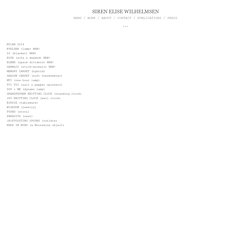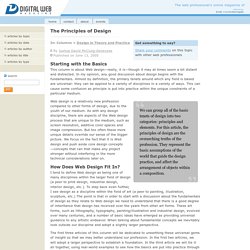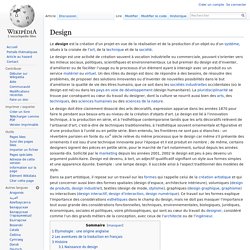

SIREN ELISE WILHELMSEN / WORK. Year: 2008 (2011) / Material: Wood and fabric / Dimensions: 25 x 8 x 8 cm/ Category: Prototype Parasitz is a mobile and flexible seat, developed to offer personal seating outside the home.

The construction makes it possible to roll the seat together in one direction while in the other it stabilizes and forms a seat. All you need is a tree to fasten it around: the seat will become stabile and the tree-pole turns into a back lean. In the nature as well as in public spaces you have to look for a free bench, a stone, a green spot or the edge of a sidewalk to have a seat. The basic request on these temporary seating opportunities are: to get up from the street level and to lean the back on something.
Copyright © 2008 Siren Elise Wilhelmsen Photos by Simon Skreddernes and Siren Elise Wilhelmsen. Design elements and principles. Design elements and principles describe fundamental ideas about the practice of good visual design.

As William Lidwell stated in Universal Principles of Design: The best designers sometimes disregard the principles of design. When they do so, however, there is usually some compensating merit attained at the cost of the violation. Unless you are certain of doing as well, it is best to abide by the principles.[1] Principles of design[edit] Principles applied to the elements of design that bring them together into one design. Unity/Harmony[edit] According to Jose Contreras, author of The Elements of Graphic Design, to achieve visual unity is a main goal of graphic design. Methods[edit] Balance[edit] It is a state of equalized tension and equilibrium, which may not always be calm. [3] Types[edit] The top image has symmetrical balance and the bottom image has asymmetrical balance Hierarchy[edit] A good design contains elements that lead the reader through each element in order of its significance. The Principles of Design.
The web professional's online magazine of choice.

In: Columns > Design in Theory and Practice By Joshua David McClurg-Genevese Published on June 13, 2005 Starting with the Basics This column is about Web design—really, it is—though it may at times seem a bit distant and distracted. We can group all of the basic tenets of design into two categories: principles and elements. Web design is a relatively new profession compared to other forms of design, due to the youth of our medium. Qui est Dieter Rams ? Dieter Rams: ten principles for good design. Design. Un article de Wikipédia, l'encyclopédie libre.

Le design est une activité de création souvent à vocation industrielle ou commerciale, pouvant s’orienter vers les milieux sociaux, politiques, scientifiques et environnementaux. Le but premier du design est d’inventer, d’améliorer ou de faciliter l’usage ou le processus d’un élément ayant à interagir avec un produit ou un service matériel ou virtuel. Un des rôles du design est donc de répondre à des besoins, de résoudre des problèmes, de proposer des solutions innovantes ou d’inventer de nouvelles possibilités dans le but d’améliorer la qualité de vie des êtres humains, que ce soit dans les sociétés industrielles occidentales (où le design est né) ou dans les pays en voie de développement (design humanitaire).
La pluridisciplinarité se trouve par conséquent au cœur du travail du designer, dont la culture se nourrit aussi bien des arts, des techniques, des sciences humaines ou des sciences de la nature. Histoire[modifier | modifier le code] Fri, 01/27/2012.